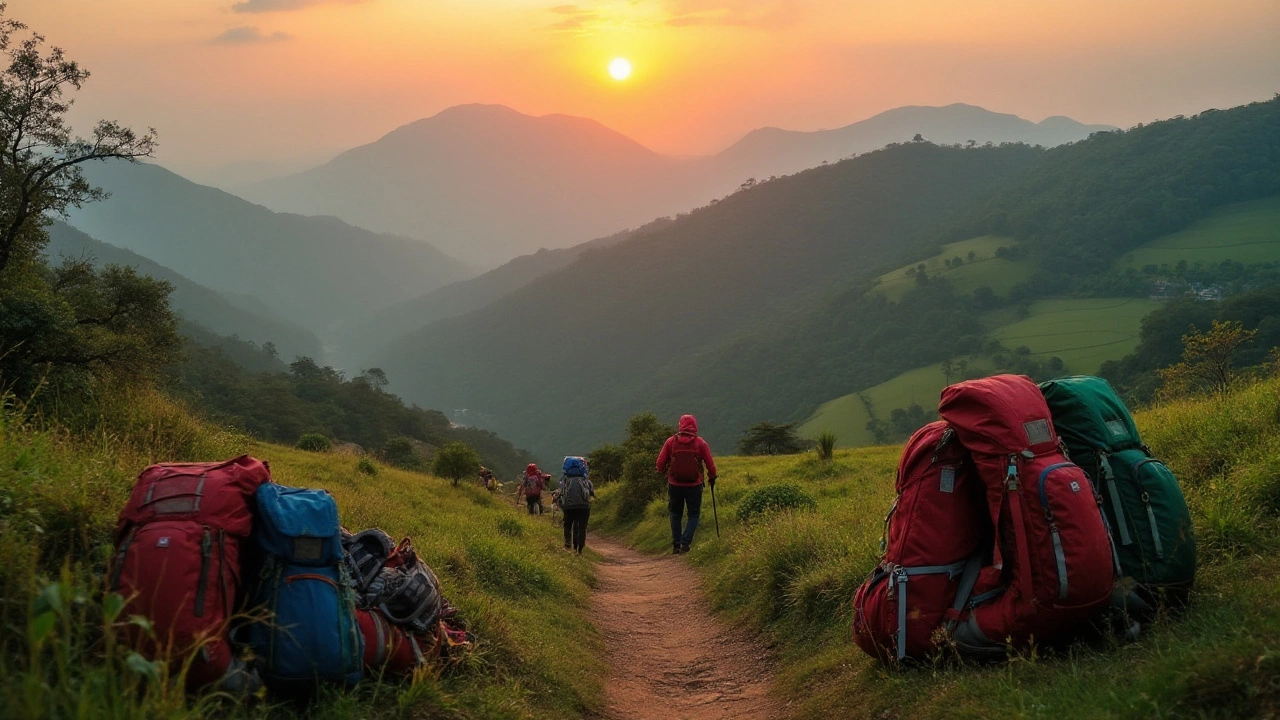SEARCH
Trekking Costs 2025 – Budget Your Next Adventure
Planning a trek? Knowing the price break‑down helps you avoid surprises on the trail. Below you’ll see the real‑world numbers for popular Indian treks and tips to keep your outlay in check.
Major Cost Categories
Permits and entry fees. Most protected areas charge a permit ranging from ₹200 to ₹2,000 per person. National parks in the Himalayas tend toward the higher end because of limited access.
Guides and porters. Hiring a local guide costs about ₹800 to ₹1,500 per day. If you need a porter, add another ₹500 to ₹1,000 daily. Sharing a guide with a small group splits the price.
Accommodation. Tea houses, guesthouses, or camps range from ₹300 to ₹2,500 per night. In remote high‑altitude zones, expect the higher figure. Booking ahead during peak season can save up to 20 percent.
Food and water. A basic meal costs ₹150 to ₹300, while a hot lunch at a mountain lodge can be ₹400 to ₹600. Pack enough water purification tablets; a 10‑tablet pack is about ₹120.
Transport to trailhead. Buses and shared taxis run ₹200‑₹800 for nearby starts. For distant bases like Leh or Gangtok, a flight can be ₹4,000‑₹8,000, but early bookings cut the price.
Gear rental. If you don’t own a sleeping bag or trekking poles, renting costs ₹200‑₹500 per item per trek. Buying quality gear once can be cheaper if you trek often.
Emergency fund. Set aside at least ₹2,000 for unexpected medical help or extra transport. It’s a small safety net that can make a big difference.
How to Keep Your Trek Affordable
Travel in the shoulder season (March‑May or September‑October). Weather is still good, but permits and accommodation drop by 30‑40 percent.
Group up with other hikers. Split guide, porter, and vehicle costs to bring the per‑person number down.
Book transport and permits online as soon as dates are fixed. Early booking locks in lower rates and avoids last‑minute surcharges.
Carry lightweight, reusable gear. A good backpack and a compact stove reduce the need to rent equipment on the trail.
Cook your own meals when camps allow it. Buying dry food in the city (rice, lentils, noodles) costs a fraction of lodge meals.
Use local homestays instead of hotels at the base camp. They offer authentic food, lower rates, and cultural exchange.
Plan your daily distance realistically. Over‑ambitious hikes often need extra nights, raising accommodation and food costs.
Check trekking forums for recent price updates. Community members share fresh figures for permits, guide fees, and lodging.
Finally, write down a simple spreadsheet: list each cost category, estimate low‑high range, and total it. Seeing the numbers side by side helps you spot where you can cut.
With these basics, you can match your adventure dreams to a realistic budget. Whether you aim for a weekend trek in the Western Ghats or a Himalayan crossing, knowing the expenses lets you focus on the views, not the bill.

Understanding Trekking Costs in India's Breathtaking Trails
Exploring the diverse landscapes of India through trekking is a rewarding experience that comes with varying costs. Understanding the expenses involved in trekking across different Indian terrains can help adventurers plan better. This article breaks down factors affecting trekking costs in India, from essential gear to travel and accommodation, offering a comprehensive guide for both budget and luxury trekking enthusiasts. With insights into various popular trekking destinations, this piece aims to equip readers with the knowledge they need for a memorable trekking journey.
Continue reading